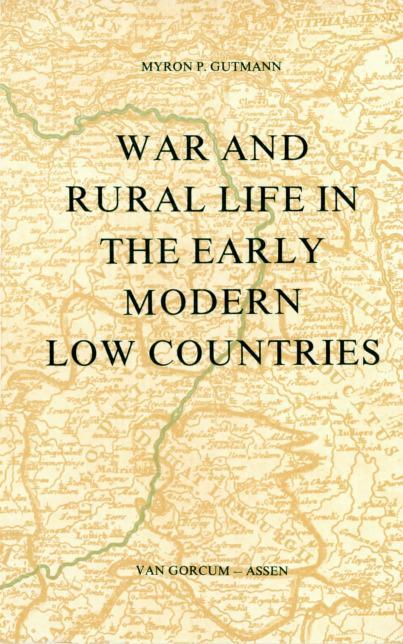War and rural life in the early modern low countries (Maaslandse Monografieën 31)

For centuries, soldiers and civilians have debated and lamented the destruction and disruption of normal life caused by the wars of the sixteenth, seventeenth and eighteenth centuries and especially the Thirty Years' War. More recently, historians have turned their attention to the problem of food supplies and epidemics in this period, and described the demographic consequences of the periodic crises that turned everyday life inside out.
This book examines all three horsemen of the early modern apocalypse - war, famine and epidemic - together, from the perspective of the region called the Basse-Meuse in the eastern Low Countries (between Liège and Maastricht), during the years from 1620 until 1750. By making use of both qualitative and quantitative material, and both descriptive and numerical techniques, the book presents a more refined and substantially revised view of war's impact on the lives of rural civilians. This book shows that methods for supporting soldiers in the field (whether occupying, in passage, or at siege) changed dramatically during the period under study, and the result of those changes were new burden on the peasants of the Basse-Meuse. Although these burdens grew heavier over time, conditions in the villages in wartime improved by the beginning of the eighteenth century, because the obligations were easier to perform and more evenly spread among the population. The author reaches a similar conclusion about the impact of war on agriculture. In the seventeenth century, war had sufficiently disastrous consequences to contribute to two long term agricultural depressions, at the times of the Thirty Years' War and during the last third of the century. By the eighteenth century wars were less frequent and rather than brining disaster often brought speculative profits to farmers.
War and rural life shows in greater detail than has previously been possible the demographic consequences of war and other crises for early modern populations. War led to the deaths of civilians by bringing epidemic diseases into th countryside. Its impact was greater than that of harvest failure or famine, and substantially equal to that of bubonic plague. It had much less impact on childbearing, however, than one might have expected. The net result of these contributions to demographic development was a situation where war did not lead to the depopulation of the Basse-Meuse, but only to a short time when the population stopped growing. This experience differed dramatically from that of parts of Germany where war seems to have caused tremendous population losses. Beyond valling for a re-examination of the German situation, the author explains this difference by reference to the resilient economic situation in the region around Liège, where opportunities for prosperity kept the population from emigrating during hard times.
The general conclusion to be drawn from this reassertion of the importance of understanding the different economic systems that operated in different European regions. The different systems served to attract or repel a population experiencing wartime hardships, and were not themselves simply victims as well.
Voor meer informatie, zie http://www.shclimburg.nl/maasl...
Hier vindt u tevens een overzicht van alle edities van de Maaslandse Monografieën én kunt u edities bestellen.
Myron P. Gutmann
1980
90-232-1740-3 geb.
Assen